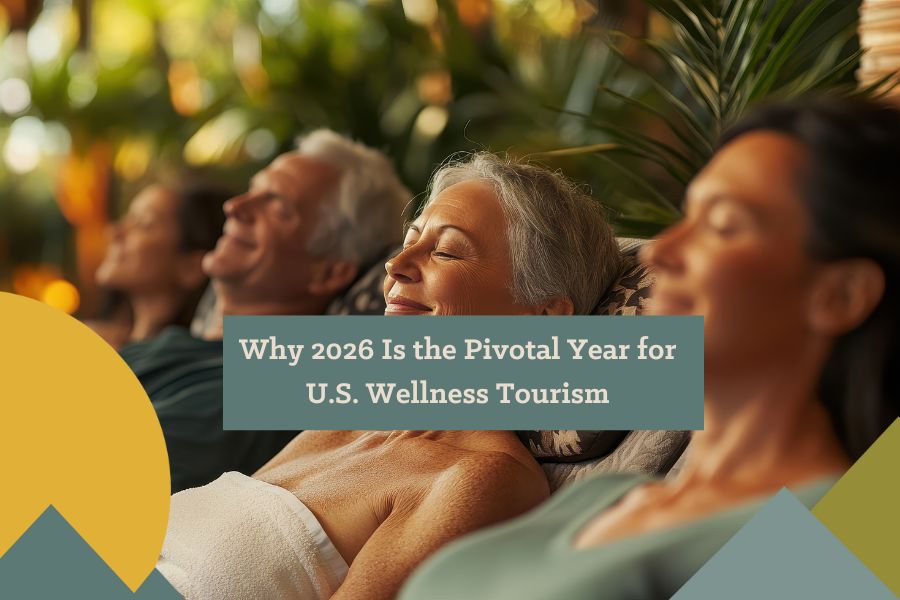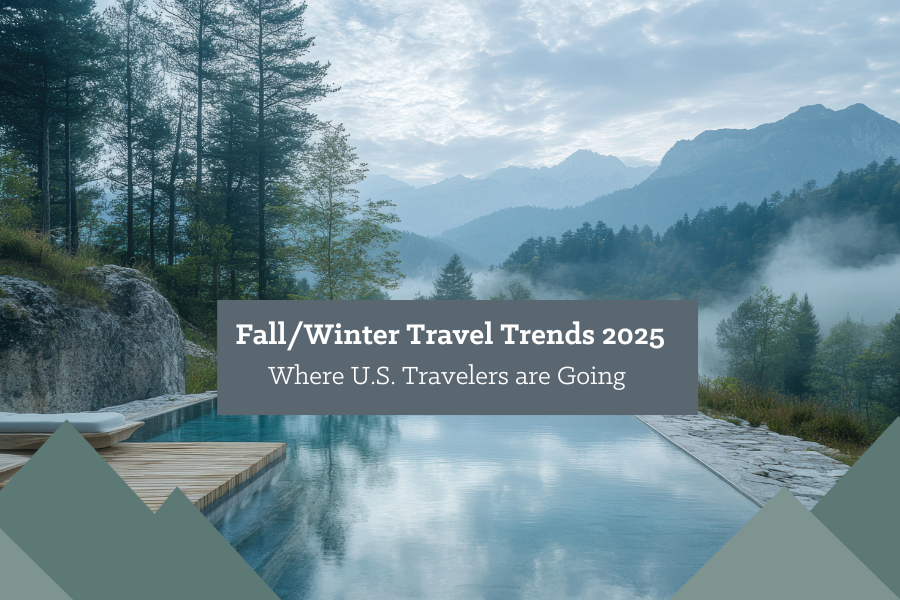We’ve been following the rise of wellness tourism for several years, and if you’re running a major destination or attraction, 2026 is your pivotal moment. Domestic travelers are embracing holistic travel experiences more than ever, and the numbers tell a compelling story for your business.
This guide breaks down how you can capitalize on shifting traveler attitudes, shows you what successful American wellness destinations are already doing, and gives you actionable strategies to build or enhance your own wellness offerings, including the retail opportunities that can significantly boost your revenue per guest.
What Is Wellness Tourism in 2026?
Think beyond your traditional spa services. Wellness tourism means trips that guests consciously book to enhance their physical, mental, emotional, or spiritual well-being. Your guests aren’t just looking to relax—they want transformative outcomes like better sleep, stress management, or meaningful connections with nature.
According to the Global Wellness Institute, global wellness tourism spending is projected to jump from approximately $720 billion in 2019 to over $1.4 trillion by 2027. North American travelers account for roughly 40 percent of that market share, making your U.S. guests central to this massive growth opportunity.
Why Guests Covet Wellness Experiences
Understanding this market size is one thing, but recognizing why your specific guests are driving this demand is what matters for your business. Your guests’ priorities have fundamentally shifted. Post-pandemic recovery needs combined with cross-generational demand for healthier, more purposeful travel means wellness isn’t just a nice-to-have anymore—it’s essential to staying competitive.
McKinsey’s 2025 Future of Wellness report shows that Millennials and Gen Z are spending more on wellness than other categories, while Boomers are embracing preventive health and longevity travel. Even with economic pressures, your guests view wellness travel as an essential health investment, not a luxury.
What does this mean for your programming? Your guests want experiences that align with their personal health routines—sleep optimization, plant-based nutrition, meditation, and time in nature. The destinations capturing this shifting traveler mindset are seeing strong returns by offering these emerging wellness trends:
- Sleep tourism and biohacking retreats: Programs designed around improving sleep quality using AI-enhanced beds, circadian lighting, and expert coaching to help guests manage chronic stress. You could build these on your own, or you could create a partnership with a wellness brand or a wearables company like OURA.
- Digital-detox and analog experiences: Device-free, nature-based stays that provide meaningful escapes from screen fatigue and constant connectivity.
- Longevity-focused wellness programs: Experiences centered on anti-aging diagnostics, IV therapies, red-light treatments, and overall healthspan enhancements. You could partner with companies like Opella or Neko Health.
- Slow-travel, nature-immersed retreats: Minimal itineraries in pristine landscapes with silence, sustainability, and intentional relaxation that attract guests seeking deep restorative experiences.
Five U.S. Wellness Destinations Setting the Standard
These trends might sound theoretical, but many U.S. destinations are already implementing them successfully and seeing real results. Before you develop your own strategy, let’s look at how these properties are delivering transformative wellness experiences—and generating serious revenue while doing it.
Canyon Ranch: Scaling Medical Wellness Beyond Resorts
Canyon Ranch exemplifies how established wellness brands are expanding their reach in 2026. Beyond their traditional resort model, their Celebrity and Regent cruise collaborations now offer floating wellness clinics for busy travelers who can’t commit to destination stays. Their new Austin-area wellness club in Texas Hill Country demonstrates how they’re bringing premium wellness closer to urban markets—a key strategy for capturing the growing wellness tourism demand without requiring multi-day commitments.
Miraval: Making Sleep Science Accessible
Miraval Arizona’s focus on sleep optimization represents a brilliant 2026 strategy—targeting the universal need for better sleep while leveraging technology that makes results measurable. Since two-thirds of Americans report sleeping better in hotels than at home, they’ve made sleep science core to their programming, including AI beds, sound therapy, and personalized coaching now available at their Park Hyatt New York location. This urban expansion strategy captures business travelers seeking wellness solutions during work trips.
Desert Wellness Properties: Minimalism Meets Maximum Impact
Desert wellness resorts like RESET Hotel near Joshua Tree, Amangiri, and Dove Mountain prove that less can deliver more revenue. RESET, which opened in mid-2025, exemplifies the 2026 approach: hypnotherapy, yoga nidra, sound baths, and breathwork in a desert setting designed for silence and introspection. Their success demonstrates how new properties can compete with established wellness brands by focusing intensely on specific outcomes rather than broad amenities.
Analog Lodges: Digital Detox as Competitive Advantage
Analog lodges like LeConte Lodge (TN), Hike Inn (GA), Opus Hut (CO), and Muir Trail Ranch (CA) represent the ultimate countertrend to hyper-connected travel. Fully off-grid and often accessible only by foot, these properties are seeing unprecedented 2026 demand from families and individuals specifically seeking to disconnect from screens. Their success shows how extreme positioning—no Wi-Fi, no cell service—can become a premium selling point rather than a limitation.
Ranch Wellness: Heritage Tourism Meets Health Trends
U.S. ranch wellness properties from Montana to Texas are capitalizing on 2026’s “cowboy core” cultural moment while delivering serious wellness programming. Wellness-focused agritourism has evolved toward authentic working ranch life, with properties like Ranchlands combining land-based wellness through regenerative agriculture workshops, horsemanship therapy, and nature writing retreats. This approach proves how destinations can blend cultural authenticity with wellness outcomes.
Wellness Programming Strategy That Scale in 2026
These examples show what’s possible, but you might be wondering how to apply these lessons to your own property. The good news is that your wellness programming can attract guests initially and justify premium pricing without requiring the massive capital investments you see at destination resorts.
Your guests want experiences that create lasting impact. Whether you’re operating theme parks, cruise ships, or major attractions, you can integrate wellness elements that appeal to families, couples, and solo travelers without disrupting your core operations.
The key is starting with programming that enhances what you’re already doing rather than requiring completely new infrastructure. Here’s wellness programming that works for major destinations:
- Dedicated wellness zones within existing spaces: Transform underutilized areas into quiet wellness spaces with meditation gardens, family yoga areas, or relaxation pods that provide respite during busy park days or cruise experiences.
- Signature wellness programming: Develop recurring experiences like sunrise meditation sessions, family mindfulness workshops, or evening sound baths that become destination differentiators and can command premium pricing.
- Wellness-enhanced existing offerings: Elevate current experiences with wellness elements like mindful walking tours, nature-based scavenger hunts, or healthy cooking demonstrations that blend entertainment with wellbeing.
- Seasonal wellness event: Create limited-time wellness festivals, digital detox weekends, or specialized retreats that drive visitation during traditionally slower periods and generate buzz on social media.
The most successful major destinations weave wellness into their existing guest flow rather than creating separate wellness facilities. This approach maximizes utilization while meeting guests where they already are in your property or experience.
How “WELL” Do You Think You Can Do in 2026?
Wellness tourism has established itself as one of the most dynamic drivers in U.S. travel, and for your destination, it’s no longer optional—it’s your key growth strategy. The examples and strategies we’ve covered show that destinations don’t need massive budgets or complete overhauls to succeed in this market.
Your opportunity lies in designing programs that deliver real rest and recovery, create meaningful connections with nature and culture, and integrate seamlessly with your existing operations. By meeting your travelers where their priorities are today, you can capture immediate revenue, build stronger guest loyalty, and secure your position in the evolving tourism landscape.
The question isn’t whether wellness tourism will continue growing—it’s how much of that $1.4 trillion market you’re ready to capture.
To keep up to date on the latest trends influencing travel and tourism, subscribe to our newsletter. To find products that your visitors and guests will love, register for our next event.








